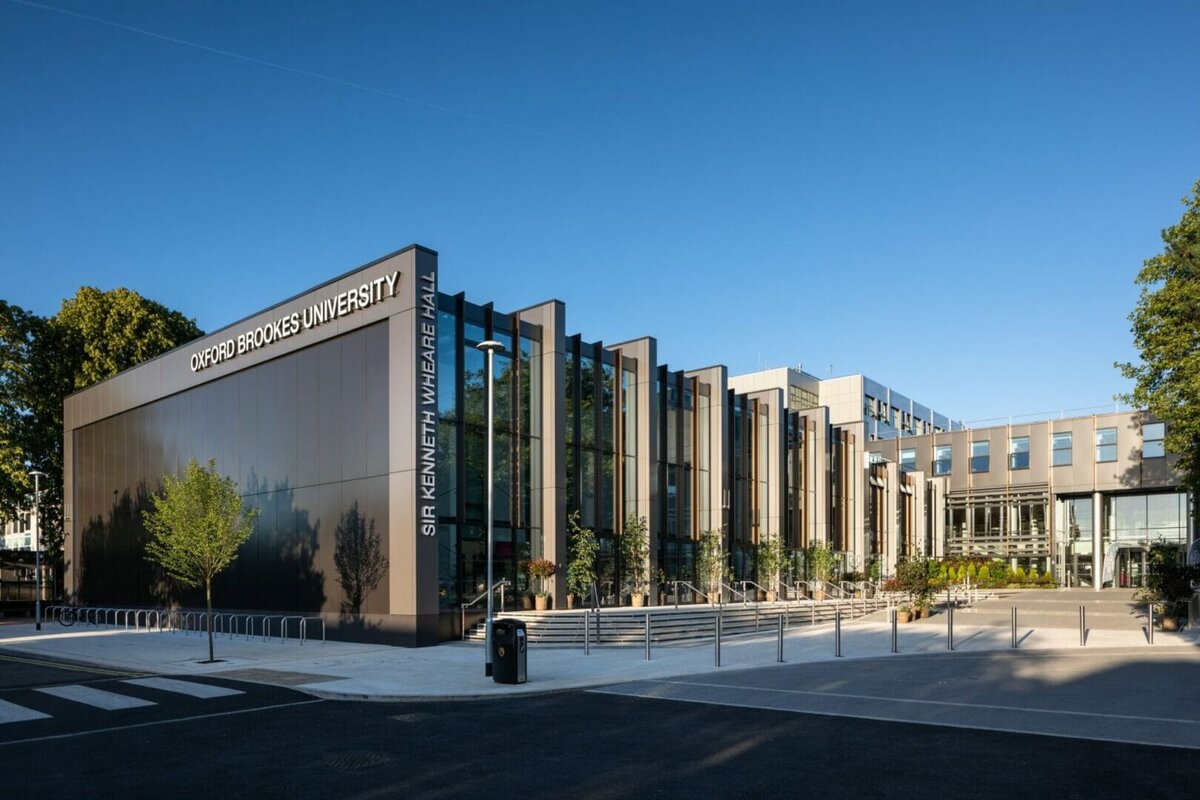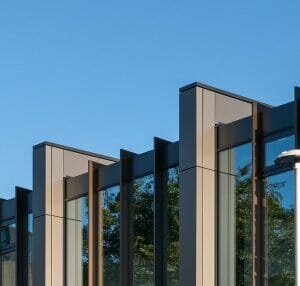
Oxford Brookes University is one of the UK’s top modern universities. It has built a local, national and international reputation for teaching and research excellence and its roots can be traced back to 1865, when it began as the Oxford School of Art. Recent significant investment in the estate has already resulted in multi award-winning facilities and this development is continuing with a ten-year, £220 million estate investment plan. One recently completed facility has seen the former Main Hall demolished and replaced with the impressive Sir Kenneth Wheare Hall, an elegant new building, designed by BGS Architects. It is a tribute to one of the most influential figures in the University’s history; and creates a multi-use space for teaching and many other key university events, including graduation ceremonies, where it is able to accommodate over 600 guests.

cantilever connections to the universal columns
Steel frame and cladding mean high thermal conductivity
Steel has a high thermal conductivity compared with many other construction materials and this means that both the structural steel frame and outer steel cladding system must be designed to minimise any possible thermal bridging issues. Steel elements should not be continuous through the cladding system. With the Sir Kenneth Wheare Hall construction, support for the external cladding was provided by cantilever connections to the universal columns; and it was critical to provide a structural thermal break at various strategic connectivity points. The Schöck Isokorb for steel-to-steel connections provided the ideal solution. By thermally separating the exterior steel structure from the interior steel structure, these modular thermal insulation elements with their stainless steel components and Neopor® insulation, reliably mitigate the risk of thermal bridging.
Thermal bridging has a number of consequences
One outcome is local heat loss from the building, resulting in more energy being required to maintain the internal temperature. And while this remains a very important aspect of thermal bridging, there is a more serious issue as far as building occupants are concerned. Low internal surface temperatures in the area of the thermal bridge can cause condensation if they are below the dew point of the air. Leading not only to structural integrity problems with absorbent materials such as insulation products or plasterboard, but the occurrence of mould growth. Which has potentially serious health implications for occupants in the form of asthma and allergy risks.

Totally verifiable performance
The Isokorb units for steel-to-steel connectivity are able to withstand extremely demanding loads and are effective against both bending moment and shear forces. The modular design of the unit ensures that it can be adapted to all profile sizes and load bearing capacity requirements. Typical applications in addition to cladding are connectivity solutions for brise soleil, canopy roofs, frame system crossbars and balconies.
Although the product type used at Oxford Brookes University is for steel-to-steel, the comprehensive Isokorb range from Schöck also offers solutions for concrete-to-concrete, concrete-to-steel – and even a maintenance free alternative to wrapped parapets. When any Isokorb product type is incorporated into residential buildings or public buildings, the required fRsi value – the temperature factor used to indicate condensation risk that must be equal to or greater than 0.75 – is always comfortably met. The range also complies with the Government Standard Assessment Procedure, SAP 2012, concerning CO2 emissions from buildings and respectively heat losses through non-repeating thermal bridges. Products meet full compliance with the relevant UK building regulations, have NHBC approval and offer LABC Registration. There is also the security of independent BBA Certification.
Contact Schöck on 01865 290 890; or visit the website at www.schoeck.co.uk for a free copy of the Schöck Thermal Bridging Guide; the Schöck Specifiers Guide and to view the full range of downloadable software.

